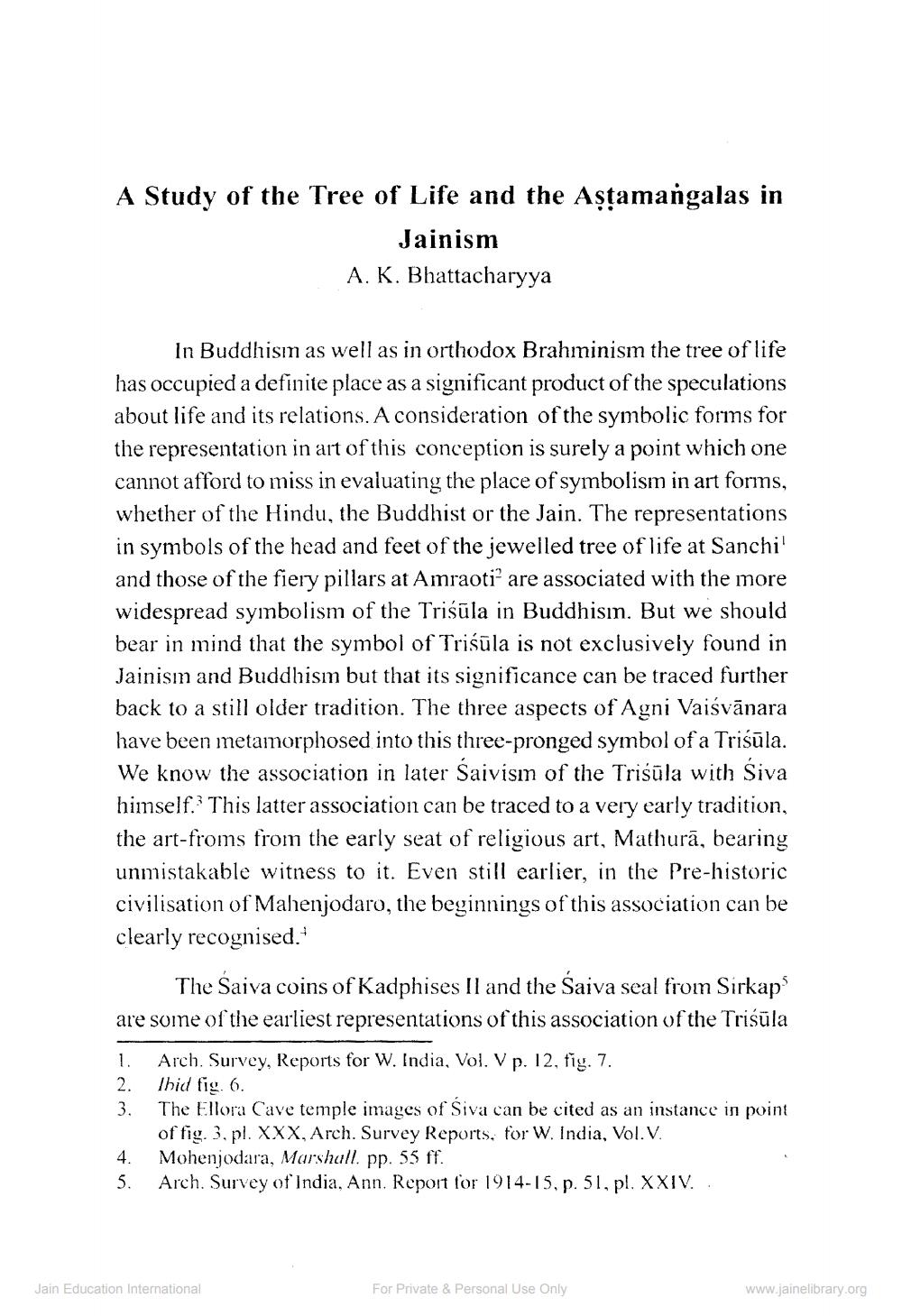________________
A Study of the Tree of Life and the Aștamangalas in
Jainism A. K. Bhattacharyya
In Buddhism as well as in orthodox Brahminism the tree of life has occupied a definite place as a significant product of the speculations about life and its relations. A consideration of the symbolic forms for the representation in art of this conception is surely a point which one cannot afford to miss in evaluating the place of symbolism in art forms, whether of the Hindu, the Buddhist or the Jain. The representations in symbols of the head and feet of the jewelled tree of life at Sanchi' and those of the fiery pillars at Amraotiare associated with the more widespread symbolism of the Triśūla in Buddhisın. But we should bear in mind that the symbol of Triśūla is not exclusively found in Jainisin and Buddhism but that its significance can be traced further back to a still older tradition. The three aspects of Agni Vaišvānara have been metamorphosed into this three-pronged symbol of a Trisūla. We know the association in later Saivism of the Trisūla with Siva himself. This latter association can be traced to a very early tradition, the art-froms from the early seat of religious art, Mathurā, bearing unmistakable witness to it. Even still earlier, in the Pre-historic civilisation of Mahenjodaro, the beginnings of this association can be clearly recognised.
The Saiva coins of Kadphises II and the Saiva seal from Sirkap are some of the earliest representations of this association of the Trisüla
1.
Arch. Survey, Reports for W. India, Vol. V p. 12, fig. 7. Ihid fig. 6. The Ellora Cave temple images of Siva can be cited as an instance in point of fig. 3. pl. XXX, Arch. Survey Reports, for W. India, Vol.V. Mohenjodara, Marshall. pp. 55 ff. Arch. Survey of India, Ann. Report for 1914-15, p. 51, pl. XXIV..
4. 5.
Jain Education International
For Private & Personal Use Only
www.jainelibrary.org




